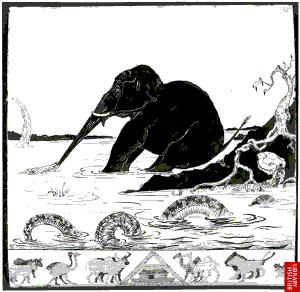 Both sandlance and chameleon strikes are rapid (being completed in 100–200 msec) and error-free, never missing the prey under ordinary circumstances. To an unaided human eye, the strikes of a sandlance, from a camouflaged position in the sand to zooplankton moving in the water column, look quite similar to the dart of the chameleon’s tongue. Both the sandlance and the chameleon have highly independent eye movements
Both sandlance and chameleon strikes are rapid (being completed in 100–200 msec) and error-free, never missing the prey under ordinary circumstances. To an unaided human eye, the strikes of a sandlance, from a camouflaged position in the sand to zooplankton moving in the water column, look quite similar to the dart of the chameleon’s tongue. Both the sandlance and the chameleon have highly independent eye movementsPredation on chameleons and sandlance is only rarely observed in the wild. Nevertheless, we feel that visually directed predation, both by and on the sandlance and the chameleon, provide the most likely context in which to understand the selection pressures that have brought about this remarkable convergence. We think that the selection pressure operates in two directions. Firstly, to provide an eye movement regime and an optical strategy that can localise and acquire prey accurately for a fast strike. Secondly, to reduce the conspicuousness of the efforts being made by the visual and oculomotor systems to localise prey. Therefore, the skin covering the eyes in both the sandlance and the chameleon even further reduces the eye’s conspicuousness. (sandlance videoclip : I spy with my little ..)
Storyteller: JD Pettigrew, Department of Physiology and Pharmacology, University of Queensland, Brisbane.
Convergence of specialised behaviour, eye movements and visual optics in the sandlance (Teleostei) and the chameleon (Reptilia)
Story Research: Convergent Evolution Examples- Ecological Equivalents
Marsupials and Placentals: a case of front-loaded, pre-programmed, designed evolution?







.jpg)























No comments:
Post a Comment